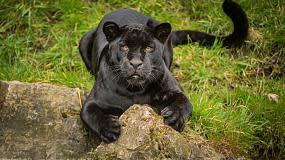Extinct 'fantastic giant tortoise' found alive on the Galápagos Islands

Believed to be extinct for more than a century, a rare species of giant tortoise is in fact still alive.
Scientists assumed that the chelonoidis phantasticus had died out more than a century ago. The species is better known as the ‘fantastic giant tortoise’ and is native to the Galápagos Fernandina island.
The only known specimen was discovered in 1906.
But in 2019, Princeton researchers discovered a lone female tortoise on the island that hinted that the species might live on.
Last week, they finally proved that the two specimens are related.
Who is Fernanda, the last known fantastic giant tortoise?
Giant tortoises can weigh as much as 417 kg and can grow up to 1.3m. They usually live between 80 and 120 years.
There are 14 different species of giant Galápagos tortoise, all descended from a single ancestor - and all listed on the IUCN Red List as either vulnerable, endangered, critically endangered or extinct.
From the tiny ant to the giant tortoise: London Zoo takes stock of its animals
Giant tortoises released on Galapagos Islands after being saved from extinction
In 2019, researchers on Fernandina island discovered Fernanda, a lone female settled on an isolated vegetation patch.
After comparing Fernanda’s DNA to that of the ‘fantastic giant tortoise’ specimen collected in 1906, the team confirmed that the pair are members of the same species.
"Like many people, my initial suspicion was that this was not a native tortoise of Fernandina Island,” said Princeton University’s Stephen Gaughran, the researcher in charge of sequencing the genome.

“We saw - honestly, to my surprise - that Fernanda was very similar to the one that they found on that island more than 100 years ago, and both of those were very different from all of the other islands' tortoises.”
Researchers estimate that Fernanda is around 50 years old.
What’s next for the fantastic giant tortoise?
The new discovery gives researchers “hope”, said Adalgisa Caccone, who helped conduct the research.
"The finding of one alive specimen gives hope and also opens up new questions, as many mysteries still remain," she added.
Scientists are cryoconserving animals to stop them going extinct
Vaquitas: Scientists find last of the species can survive inbreeding - if illegal fishing stops
"Are there more tortoises on Fernandina that can be brought back into captivity to start a breeding program? How did tortoises colonise Fernandina, and what is their evolutionary relationship to the other giant Galápagos tortoises?” Caccone asks.
There is still hope for the fantastic giant tortoise - on expeditions to Fernandina Island, researchers have discovered recent tracks and scat of at least two or three other tortoises.
Fernanda herself is now at the Galápagos National Park Tortoise Centre, a rescue and breeding facility, where experts are seeing what they can do to keep her species alive.
"This information is important for conservation,” said Peter Grant, a Princeton Professor of Zoology and Galápagos expert.
“It spurs biologists to search harder for the last few individuals of a population to bring them back from the brink of extinction."

 Yahoo News
Yahoo News 




